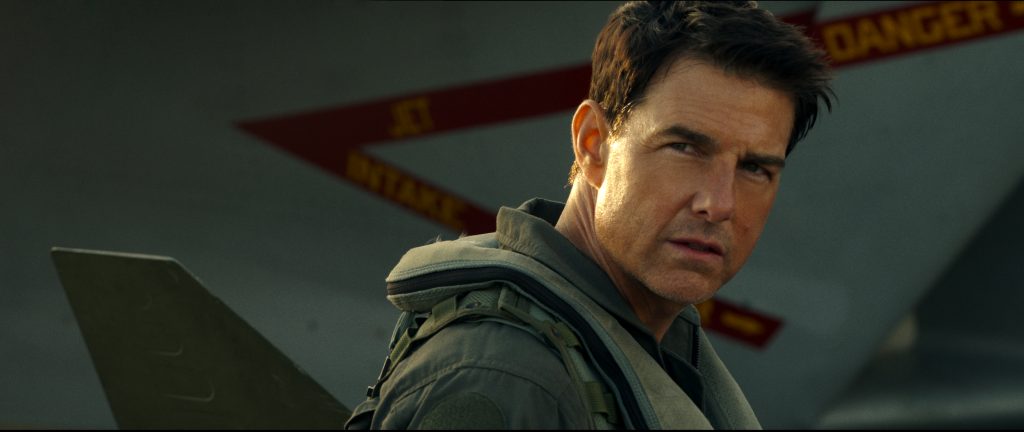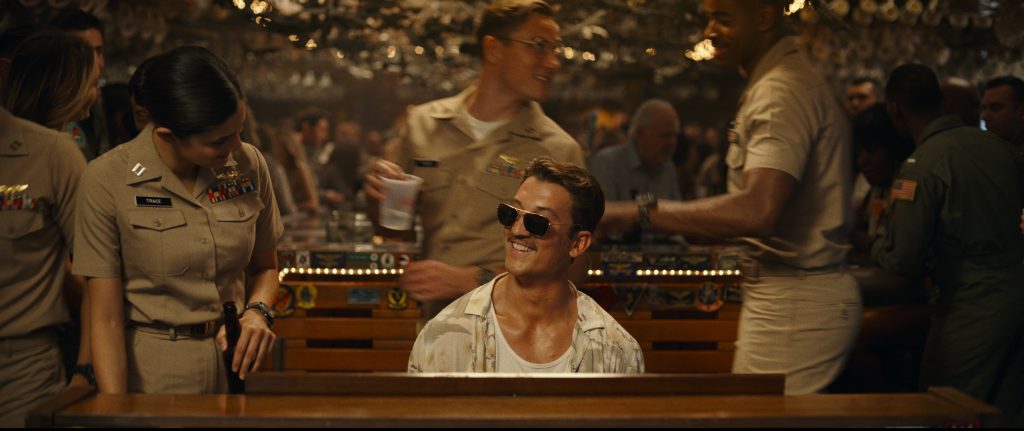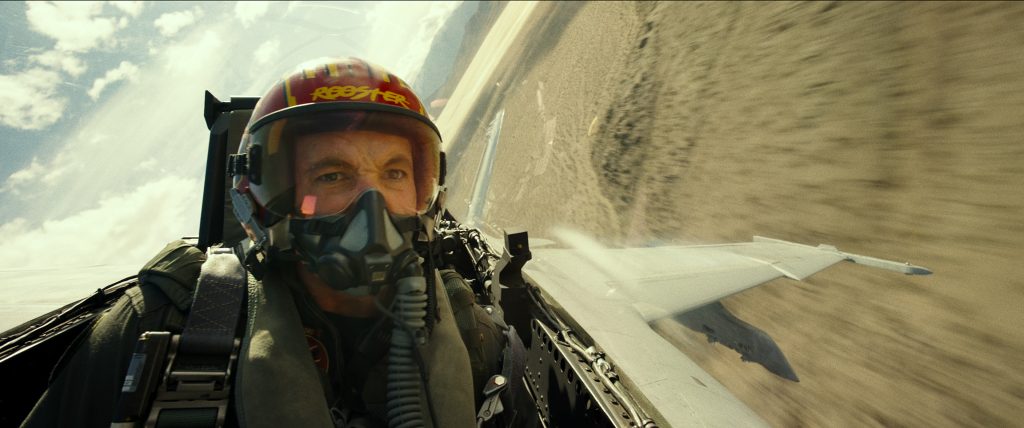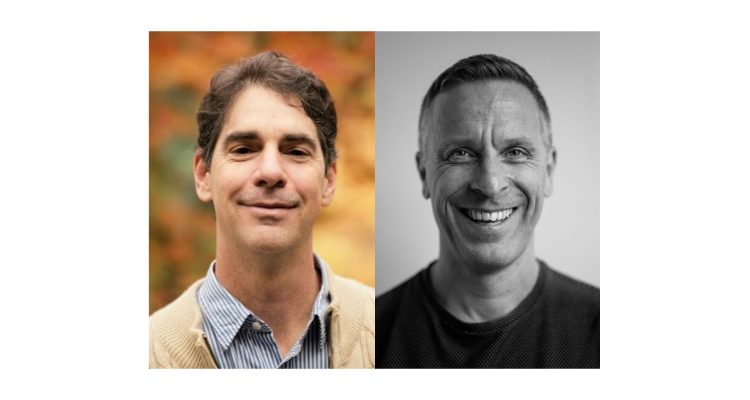Top Gun: Maverick, the much-anticipated sequel to the original 1986 Top Gun, has been a box-office smashing success. Lead Sound Designer Al Nelson from Skywalker Sound and re-recording mixer Chris Burdon rose to the challenge by creating high-adrenaline soundscapes that transported audiences directly into the cockpit of the F/A-18 jets.
Tantamount to the thrilling action sequences was the emotional power of the relationships that extended from the original Top Gun. After more than thirty years of service as one of the Navy’s top aviators, Pete “Maverick” Mitchell (Tom Cruise) finds himself training a detachment of Top Gun graduates. He encounters Lt. Bradley Bradshaw (Miles Teller), call sign “Rooster” and son of Maverick’s late friend Nick Bradshaw, aka “Goose.”
The simmering tension between Maverick and Rooster becomes the film’s emotional core as Goose’s death echoes around Maverick, particularly when Rooster sings, “Great Balls of Fire.”
“The shape of that scene is so specific and so articulated to the audience with music from the original film,” explains Nelson. “It was a very complicated scene because Maverick is returning to his origins. So we go in and out of that diegetic moment of Rooster singing to Maverick’s head where he’s reflecting.”
The original Top Gun garnered four academy award nominations, winning best original song for ‘Take My Breathe Away,’ and recognizing the film’s state-of-the-art soundscapes. Nelson and Burdon, along with sound supervisors James Mather and Njorn Schroeder, and re-recording mixer Mark Taylor, had audiences gripping their seats as engines rumbled.
Nelson’s experience capturing auditory elements of various jets, coupled with Burdon’s masterful mix of the dialogue and music, ensured the clarity of each character’s voice alongside the thundering hums of actual jets and a pulsating score by Harold Faltermeyer and Hans Zimmer.
“The starting point of dialogue is in its isolation and the combination of a creative and technical approach to get it under control and ready for action,” shares Burdon. “If you’ve got control sonically of the dialogue and helmet distortions, you can bury them depending on the kind of action sequence and sound effects, but the dialogue might have a different tonality.”
Awards Focus spoke with Al Nelson and Chris Burdon about collaborating with Tom Cruise, connecting with the 1986 sound team, recording the jet sounds from 40 stories above the ocean, and their concern about exposure to harmful sound levels.

Awards Focus: Top Gun: Maverick has been such a success that it had another theatrical run. When you reflect on the experience of working on the film, what do you draw back on as being the most memorable?
Al Nelson: The pandemic was not a welcome part of our process. It complicated things. Chris and I were on opposite continents. Chris can relate to being amidst those challenges and feeling the pressure of completing this project. But the other side of that was the audience reacting to what we believe is a fantastic film and was made to generate those reactions.
Chris Burdon: My memory is split twofold in terms of timeframe. It’s that initial gearing up to get going in late spring/early Summer of 2020 and starting to mix and use all the work done by Skywalker Sounds, including all the background, editorial, and this wonderful, intense directive this film had to have emotional power. That came directly from Tom Cruise, editor Eddie Hamilton, and Christopher McQuarrie, who were in the UK with us.
We had this starting point where we knew what we needed to deliver. What’s so memorable is that you do that in isolation, and two years later, people respond to the film saying all the things you had been hoping they’d say. I’ve never had that symmetry as clearly in any film I’ve worked on. There was so much emphasis on Maverick’s emotional journey through this incredibly exciting, action-packed blockbuster. We ended up with people crying, laughing, and gripping their seats for 30 minutes.
AF: Top Gun was a touchstone for sound in film in 1986 and garnered several Academy Award nominations. Were you able to connect with anyone from the sound teams in preparation for Maverick?
Nelson: We greatly respect what they did, but it was 30 years ago. We were on a new film with new filmmakers and new directions. We took their great work as a reference and then launched from there. You look at the legacy of Star Wars and what they did back in the ’70s, and you apply that to the modern day, but with new people and new ideas.
In the 1986 film, much of the aesthetic was the idea of hitting the cuts. It articulated going inside and outside the jet, and you hear the sound go from zero to a hundred and back to zero again. You cut to a scene, and immediately it blasts on. We applied our own aesthetic, which is you hear more low end in this one compared to the first.
Burdon: I coincidentally met [Academy Award-winning Sound Designer] Cece Hall, the original sound supervisor in the first film. I went out for a meal, and she was meeting my boss. She was lovely and complimentary about how I mixed the film and complimented the clarity of dialogue I did for a Matthew Vaughn film.
AF: Chris, you’re coming in toward the end of post-production as the re-recording mixer. I want the start with how you define your role as the re-recording mixer in post-production and the level of responsibility you felt coming into Top Gun: Maverick.
Burdon: On this film, I’m responsible for the music and dialogue mixing, and Mark Taylor was on the effects side of the board. The starting point for me in any film is that the clarity of the dialogue is paramount. I knew there were a lot of variations in the manipulation of dialogue that I would need to be involved in.
The film is broken down into 20-minute reels, then those reels are broken down into smaller sections, and we would intuitively get into the shaping of all those sequences. Then we’d revisit and recognize the music not needing to be dominant, and so on.
AF: Al, you’ve been at Skywalker Sounds for 25 years, working from the machine room to Lead Sound Designer. Can you talk about that journey and your initial conversations with Joseph Kosinski when you signed on?
Nelson: [laughs] that’s a long journey.
Skywalker is a campus of creatives that Ben Burtt kicked off in the ’70s. So we have the Star Wars legacy and the Jurassic Park films with Gary Rydstrom. We have Randy Thom too, and his legacy of sound designers. All these people are colleagues I have coffee with and meet in the hallways. So the inspiration as I moved up the ranks and gained experience was invaluable.
Oblivion was my first opportunity to work with Joe (Kosinski), an invested filmmaker passionate about sound. He loves to roll up his sleeves and get in that utmost environment, and he really feels the opportunity to use sounds as an immersive storytelling tool.
One of the first things we requested was to get access to the Navy and get out there, start recording and fill our tool belt with what we needed for this massive project. So we were recording and doing early sound design over a good year. Tom [Cruise] and [editor] Eddie Hamilton were very involved, and the expectations were high from both the filmmaker and the audience. The script had such great bones, but the way they shot it was inspiring, and we had to measure up to it.

AF: The scene where Miles Teller is singing ‘Great Balls of Fire’ has so much going on. There’s music in the bar, the tension between Rooster and Hangman, and a lively crowd having a great time. Then you’ve got Maverick outside looking solemn and having an emotional moment. Chris, how did you approach that sequence to balance the dialogue, music, and atmosphere inside and outside the bar?
Burdon: I’m so proud of that scene and what we ended up with. It’s the introduction to so many characters, so you want to hear them and not overpower their voice. You’ve also got the sound of the bar and the music, which are all telling the story. All the tracks have relevant lyrics, and there’s a shape in terms of intensity with Hangman and Rooster. Tom [Cruise] was particular that we needed to build that pressure, but there needed to be a build as it was quite a long scene. I also wanted to make sure that every line and all the different characters had their place.
Nelson: What Chris’s team did and what the editorial team did really met the filmmakers’ desires, but it was a lot of work.
Burdon: Also, the crowd we recorded when Rooster plays the piano was actually the sound team in the UK because it was Covid restrictions. We didn’t do our usual group records, so everybody in the dubbing theater and editorial headed home one weekend with the lines for the song, and we put on American accents. I also had family and friends help out. Tom came in and noticed, and it was a nice little moment in the film.
AF: There must’ve been a sense of responsibility when the old Top Gun theme is introduced, and the film hits the peak of nostalgia. What was it like in the studio mixing that moment, and were many people in the room with you?
Burdon: It’s a supportive team, but we had to be restrictive due to Covid. I got some feedback from one of the foreign language mixers who said he wished I’d mixed the guitar theme a bit louder. He may be right.
The film inherently has a lot of very loud moments, but as a mixer, I’m trying to avoid making it a warped sound. I’m also choosing the music level that gets the hairs up on the back of the neck. You can tell from the movie’s opening that the logo appears, and there’s a bit of low end that comes in, and we tried to strike that balance between being really bold and not too loud.
AF: Meanwhile, Al, you’re recording the growls and force of the jets, which adds to the complexity of the balance between dialogue and music. The aircrafts are essentially more characters speaking. How did you capture the thunder of the jets and the progression from low levels to full power?
Nelson: There was a learning process, but I had done it before. I knew the tonalities you can get out of the aircrafts depending on where they are in their cycle. They all have different personalities. We had a lot of big diaphragm microphones and a portable rig because you have to be on the move. We had pads, which diminish the input sound into your recorder so that you don’t distort your preamps.
Some of these sounds are between 130 and 160 dB, and you’re standing right near them. When you’re on location, you feel it in your gut. You feel the force and power of these jets through your body. We wanted that to come through for the audience.
I spent a week on an aircraft carrier. I was on this carrier deck, and 40 stories below was the ocean. Then a jet would come flying right past you because they’re going to catch a wire at full thrust. So you basically get a flyby at full thrust directly in front of you as the jet comes in and launches back off the carrier deck. Then you go through the material and look for personality, character, and magical moments. It’s a lot of pulling bows from your quiver and using just the right ones at the right time.

AF: You’re giving me anxiety about the jet rushing past you on an aircraft carrier deck.
Nelson: It’s pretty daunting. It’s dangerous, for sure.
AF: But also, the levels of dBs you’re talking about can damage your ears and hearing. I imagine it’s similar for you, Chris, when you’re in the dubbing room listening to these sounds repeatedly. Was it ever a concern to you both to think about the impact these sounds can have with repetitive exposure?
Nelson: Absolutely. When we are near jets, we have professionally designed earplugs. They measure your ear and make the earplug fit just right. You’re putting in 25 dB diminishing earplugs and call cans worn in the Navy. There’s 50 or 60 dB’s suppressing on your ears. We definitely used a lot of sign language to communicate.
[laughs] You don’t want to go out there without protection. You’re ruining your career.
Burdon: It’s a pretty long-term problem and a potential issue for mixing loud films in a dubbing theater. As Al mentioned, we have the same earplugs designed to give you a pad, but you can still hear every detail. Mark Taylor and I would do a bit of a dance on the loud sequences. I would mix a music pass and a dialogue pass with the sound effects running, and then Mark will concentrate on them. In that space, you would take a rest.
We intentionally didn’t want to make the aesthetic of this film too loud all the way through. The film, ironically, has some of the quietest dialogue. When Pete meets Iceman and his wife, if you pay attention to that again, Tom Cruise was particular that we should go very, very sensitively low. It’s surprisingly quiet there, and it’s very nice in terms of space and, emotionally, how it works.


